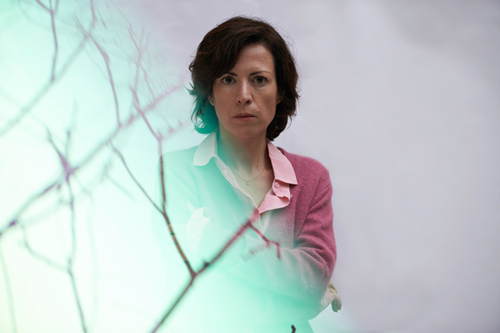Chus
Martinez

Spain, 1969Chus Martínez has a background in philosophy and art history. Currently she is the Head of the Institute of Art of the FHNW Academy of Arts and Design in Basel, Switzerland. Before she was the Chief Curator at El Museo Del Barrio, New York. She was dOCUMENTA (13) Head of Department, and Member of Core Agent Group. Previously she was Chief Curator at MACBA, Barcelona (2008 to 2011), Director of the Frankfurter Kunstverein (2005–08) and Artistic Director of Sala Rekalde, Bilbao (2002–05). For the 56th Biennale di Venezia (2015), Martínez has curated the Catalan Pavilion with Albert Serra and for the 51st Biennale di Venezia (2005), she curated the National Pavilion of Cyprus. The past year she has been, as well, Curatorial Advisor of the current edition of the Istambul Biennial. In 2008 Martínez served as a Curatorial Advisor for the Carnegie International and in 2010 for the 29th Bienal de São Paulo. During her tenure as Director of the Frankfurter Kunstverein she curated solo exhibitions of Wilhelm Sasnal among others; and a series of group exhibitions including Pensée Sauvage and The Great Game To Come. She was also the founder of the Deutsche Börse Residency Program for international artists, art writers and curators. While at MACBA Martínez curated the Thomas Bayrle retrospective, an Otolith Group monographic show, and an exhibition devoted to television, Are you ready for TV? In 2008 Martínez was the curator of the Deimantas Narkevicius retrospective exhibition, The Unanimous Life at the Museo de Arte Reina Sofia, Madrid, which travelled to major European museums. Martínez lectures and writes regularly including numerous catalogue texts and critical essays, and is a regular contributor to Artforum among other international journals.
Once
in the
metabolic age...
It seems impossible to justify using Peralta Ramos‘s "egg" to explain the birth of the Internet and the new media. "Egg" is my personal nickname for a work that has been close to me for a number of years. Produced in 1965 in the context of an exhibition at the Instituto Torcuato Di Tella, the work is considered the outer boundary of Federico Manuel Peralta Ramos’s career –even if that is not really true and he continued to produce work afterwards. But our interest in "reality" is partial, which is why I can say that, for me, this work is the beginning of the Internet. Yes, that’s exactly what I mean, don’t get me wrong. The egg –symbol par excellence of the possibility of a private language in the Victorian age (Humpty Dumpty)– is as much the container of all (genetic) information required by life as it is the herald of a new beginning. That is why the world outside the egg is a kind of digital mermaid, half cybernetics and half idiocy. That media-idiocy mix is one of the greatest achievements of art from the second half of the 20th century and into the present. Regardless, you will certainly think that I am distorting reality, but that process of distortion is precisely what defines research in art. Distorting artistic, aesthetic, informative, linguistic, social, and material languages is something art does ceaselessly, without making any fuss, even though it has enormous impact on the transformation of our senses, of our way of perceiving and, therefore, of thinking. This "distortion" is organic, not formal. That is why I speak of a metabolic age, a time –our time– when modern ways of ordering time and its production are becoming a thing of the past as we delve into a world where changes ensue in an osmotic, rather than a conscious, fashion. A world marked by a sense of absorption that will bring an end to dual systems like before/after, center/periphery, man/woman, human /natural, etc...
Are we ready? Our guide is the egg, and this is my personal homage to one who, very early on, understood that we will change through contact, not through consciousness.